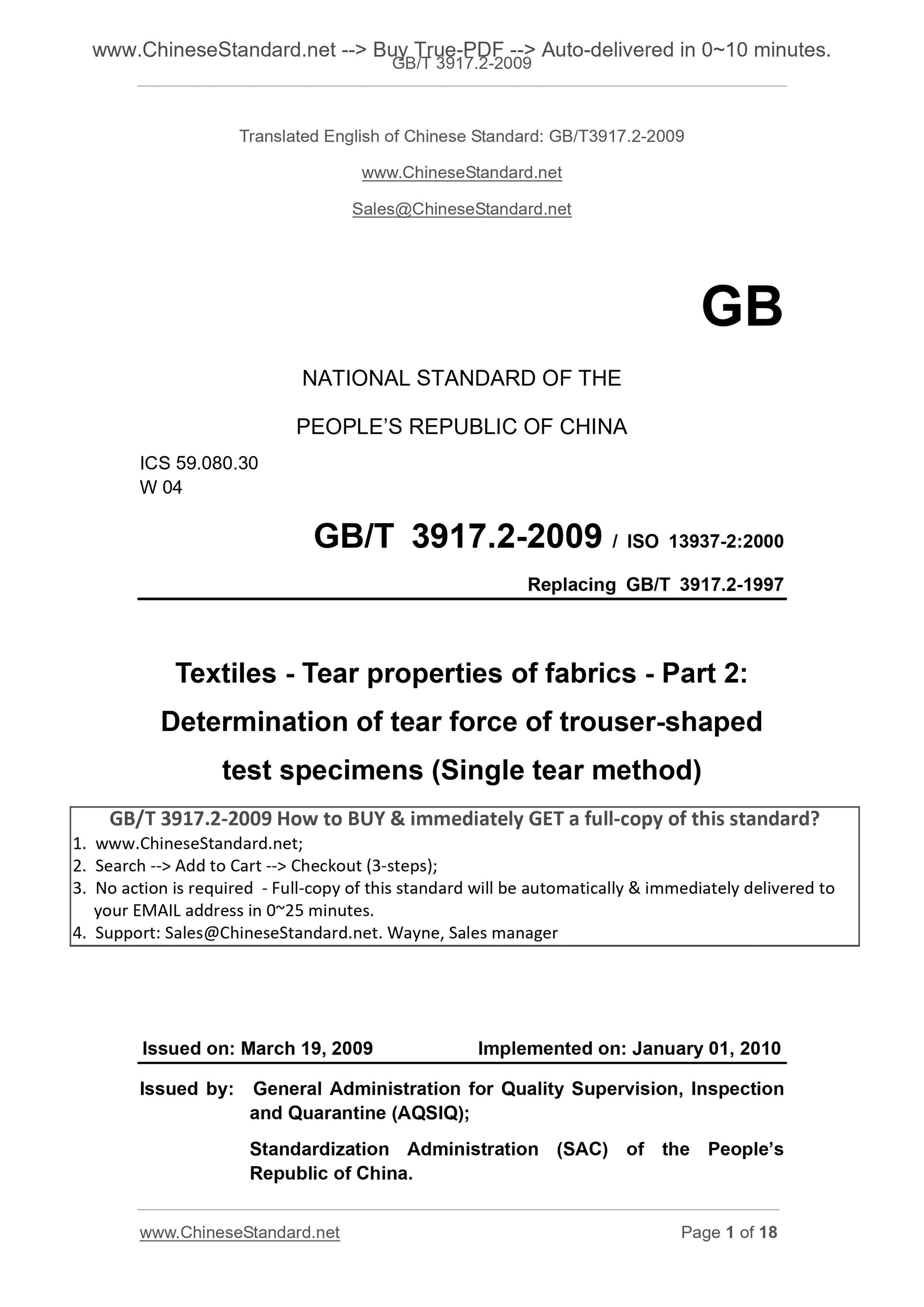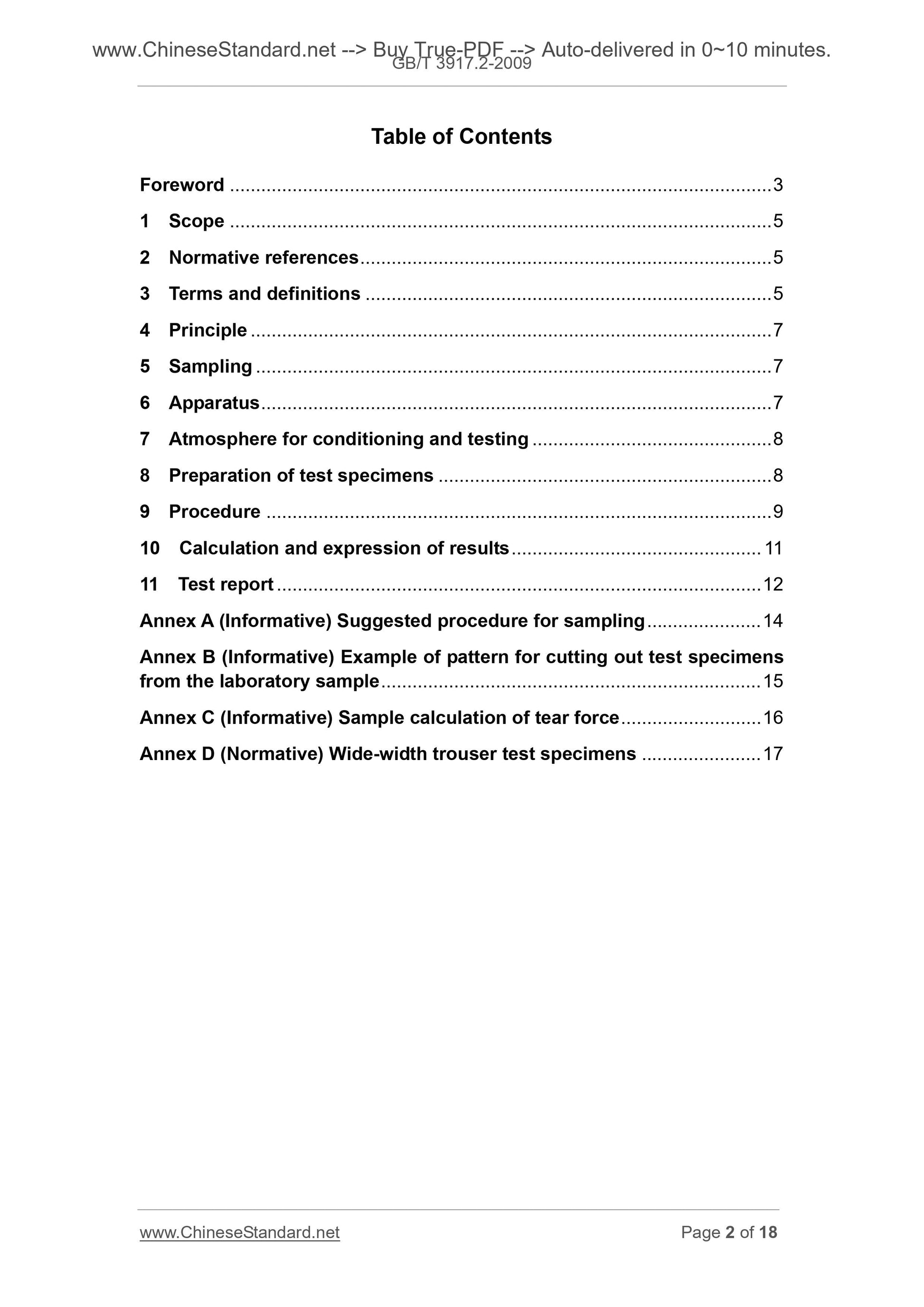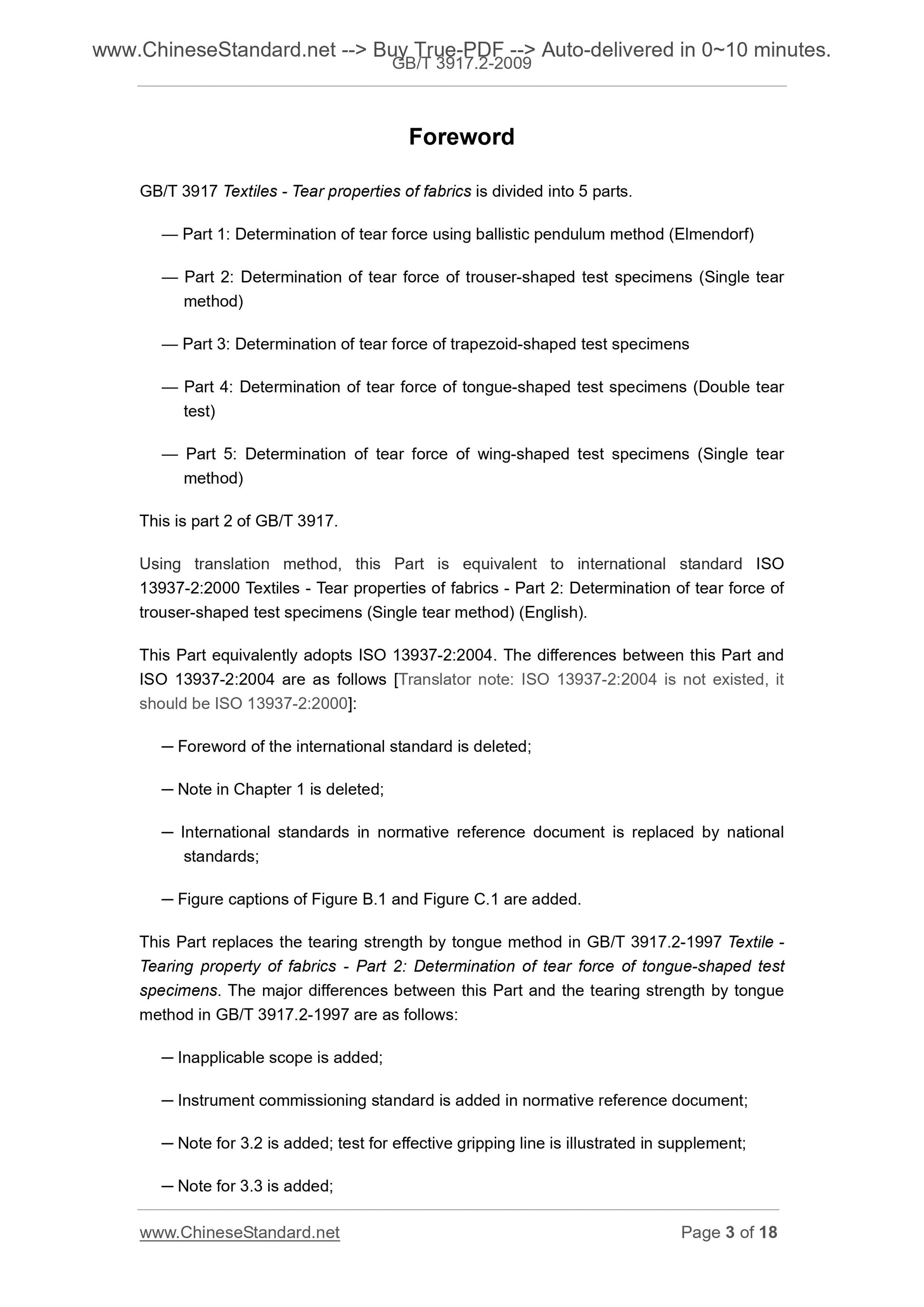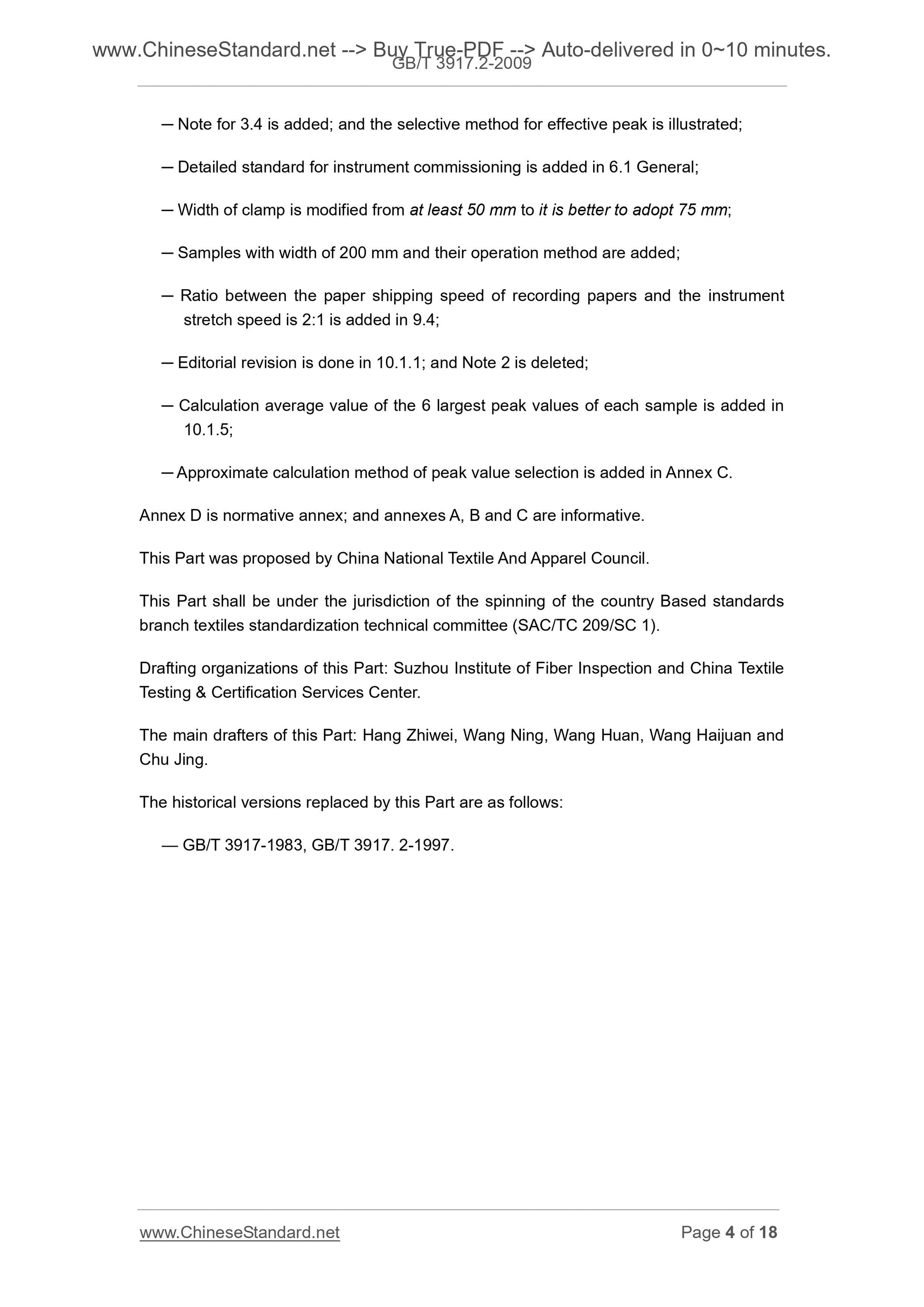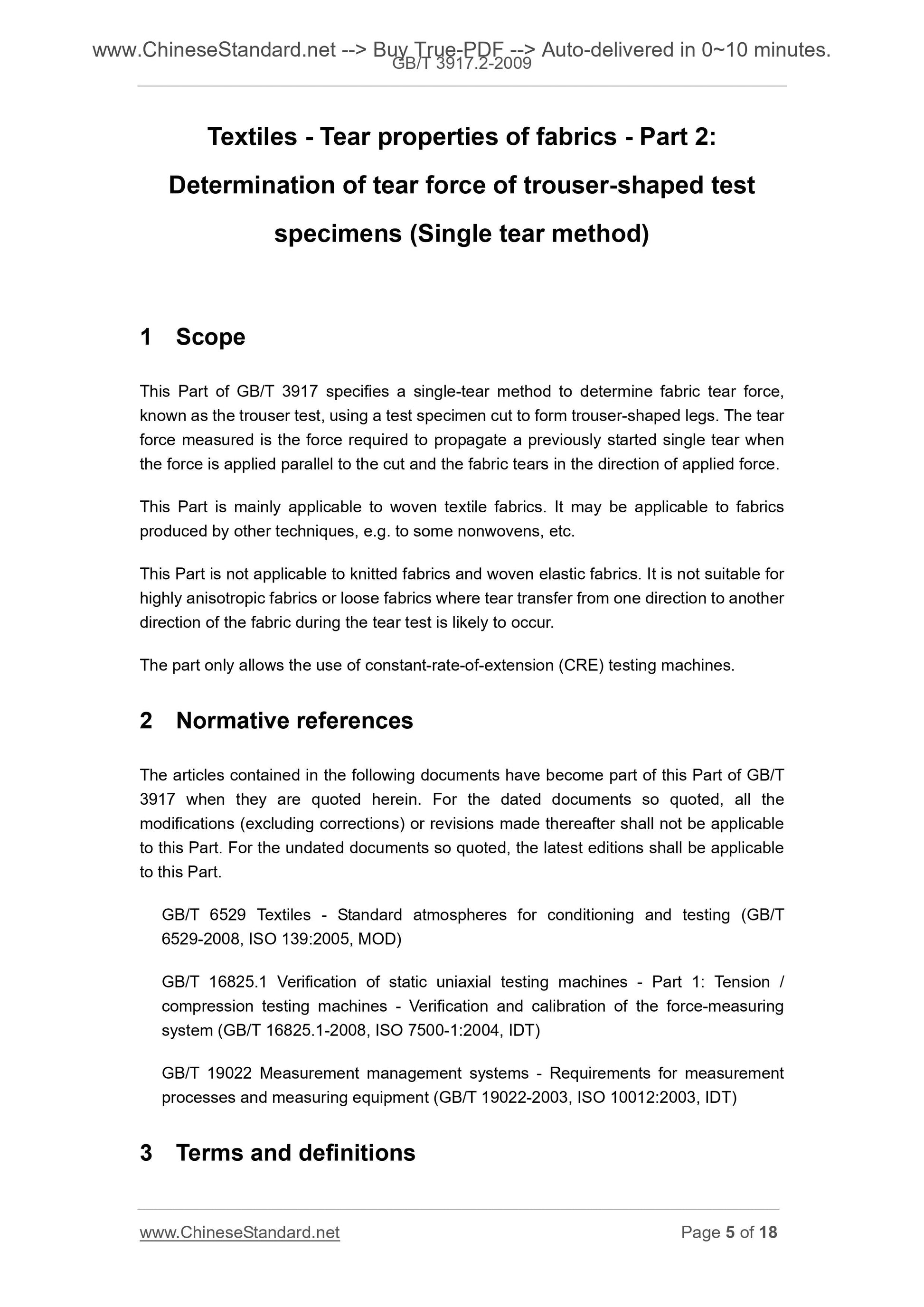1
/
of
5
www.ChineseStandard.us -- Field Test Asia Pte. Ltd.
GB/T 3917.2-2009 English PDF (GB/T3917.2-2009)
GB/T 3917.2-2009 English PDF (GB/T3917.2-2009)
Regular price
$85.00
Regular price
Sale price
$85.00
Unit price
/
per
Shipping calculated at checkout.
Couldn't load pickup availability
GB/T 3917.2-2009: Textile -- Tear properties of fabrics -- Part 2: Determination of tear force of trouser-shaped test specimens (Single tear method)
Delivery: 9 seconds. Download (and Email) true-PDF + Invoice.Get Quotation: Click GB/T 3917.2-2009 (Self-service in 1-minute)
Newer / historical versions: GB/T 3917.2-2009
Preview True-PDF
Scope
This part of GB/T 3917 specifies a method for determining the tear strength of a fabric using a single slit pant sample method. In the direction of tearing strengthThe force required to tear the fabric from the initial single slit slit to the specified length is measured.
This section is mainly applicable to woven fabrics, and can also be applied to fabrics made by other technical methods, such as non-woven fabrics.
This section does not apply to knitted fabrics, woven elastic fabrics, and sparse fabrics that have the potential to cause tear transfer and have higher anisotropy.
Fabric.
This section specifies the use of a constant velocity elongation (CRE) tester.
Basic Data
| Standard ID | GB/T 3917.2-2009 (GB/T3917.2-2009) |
| Description (Translated English) | Textile -- Tear properties of fabrics -- Part 2: Determination of tear force of trouser-shaped test specimens (Single tear method) |
| Sector / Industry | National Standard (Recommended) |
| Classification of Chinese Standard | W04 |
| Classification of International Standard | 59.080.30 |
| Word Count Estimation | 13,191 |
| Date of Issue | 2009-03-19 |
| Date of Implementation | 2010-01-01 |
| Older Standard (superseded by this standard) | GB/T 3917.2-1997 |
| Quoted Standard | GB/T 6529; GB/T 16825.1; GB/T 19022 |
| Adopted Standard | ISO 13937-2-2000, IDT |
| Regulation (derived from) | National Standard Approval Announcement 2009 No.3 (Total No.143) |
| Issuing agency(ies) | General Administration of Quality Supervision, Inspection and Quarantine of the People's Republic of China, Standardization Administration of the People's Republic of China |
| Summary | This standard specifies the method for determining the fabric sample with a single slit trouser tear strength of the law. Tear strength of the fabric measured in the direction from the initial single tear slit to a predetermined length of the incision required force. This section applies to woven fabrics, fabric can also be applied in other manufacturing technical methods, such as non-woven cloth. This section does not apply to knitted fabric, woven elastic fabric and tearing the fabric may produce sparse transfer fabric and has a high anisotropy. This section provides the use of constant elongation (CRE) tester. |
Share





